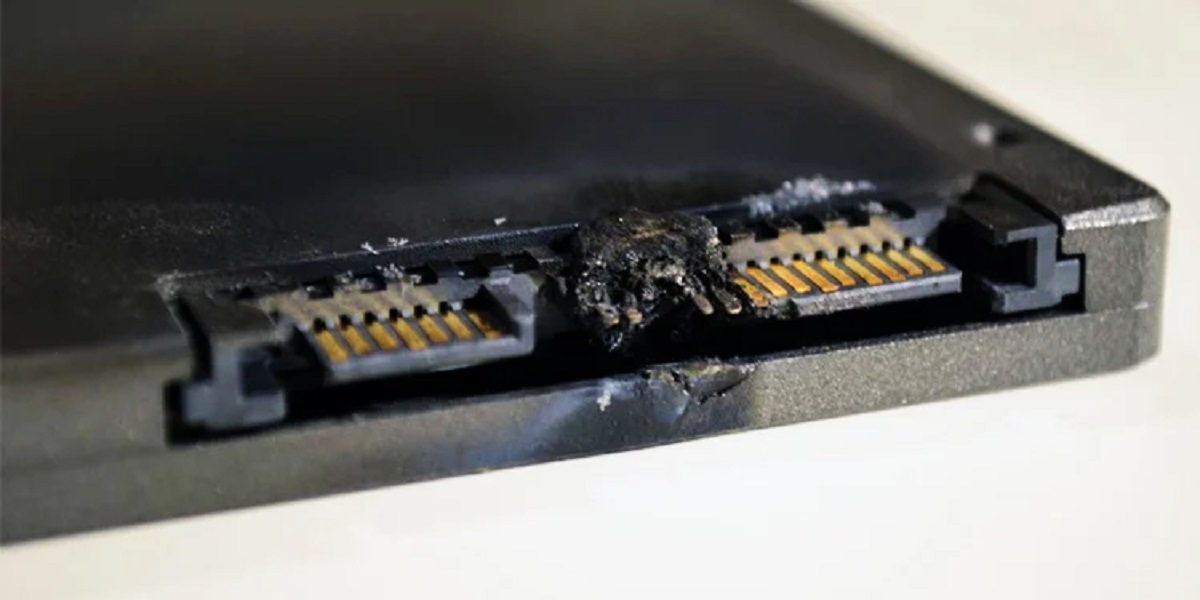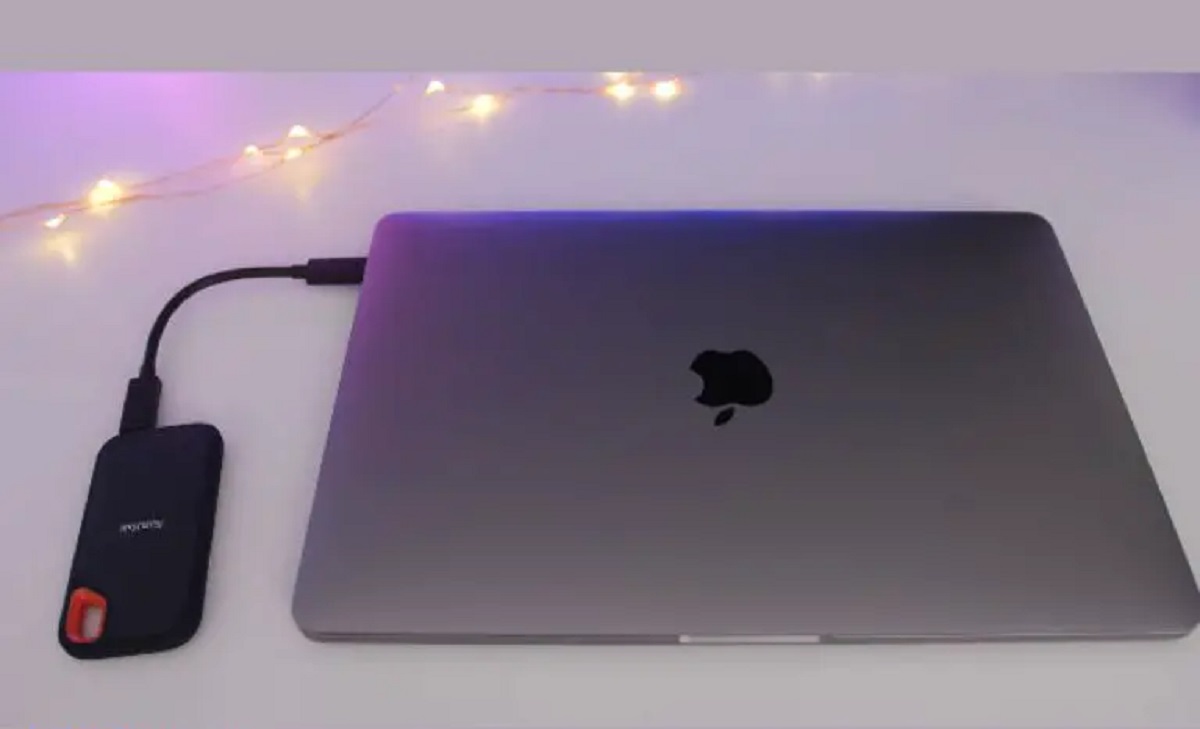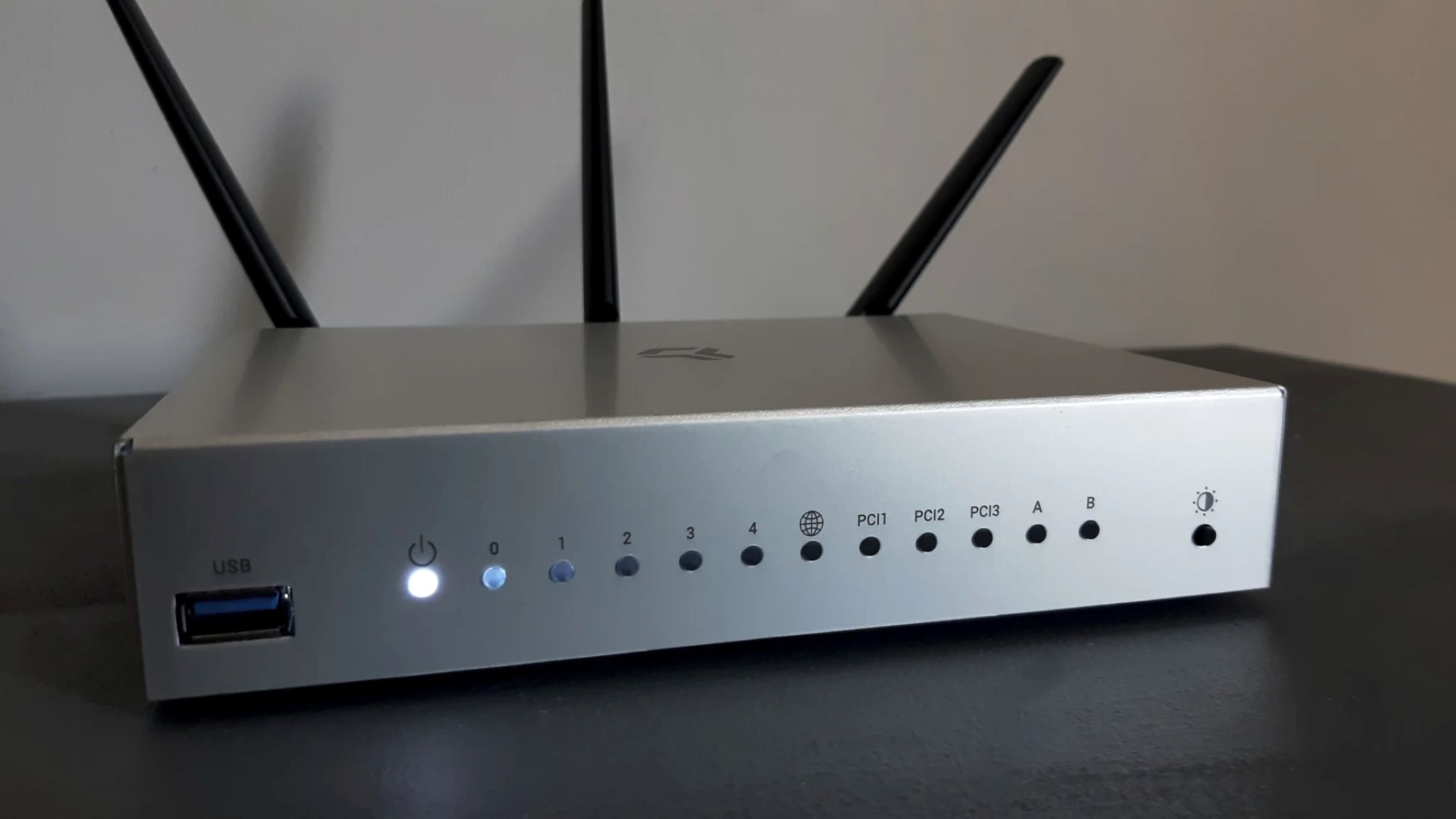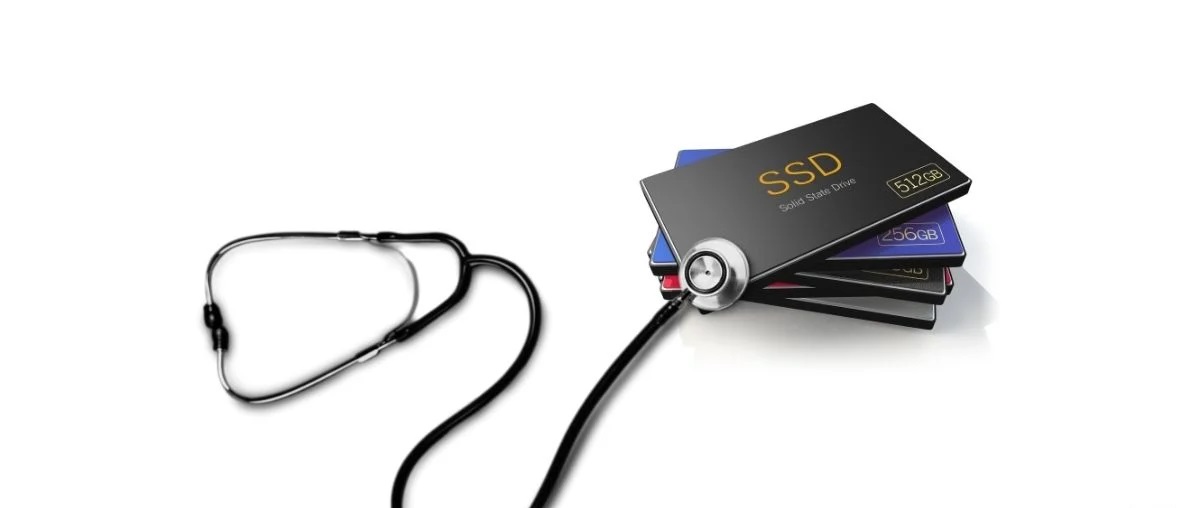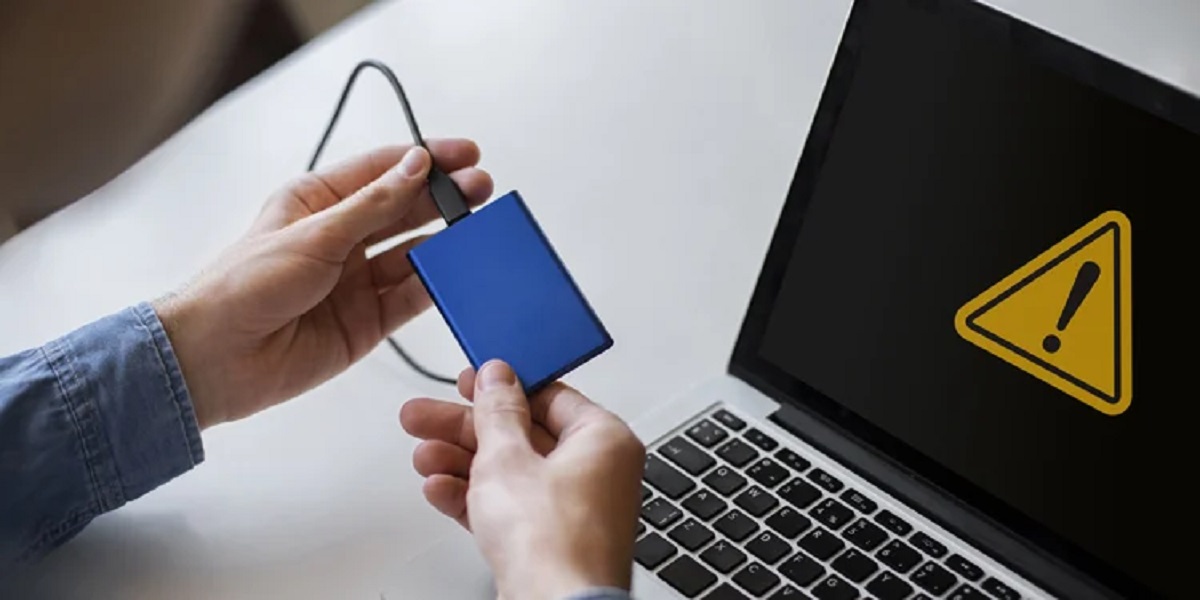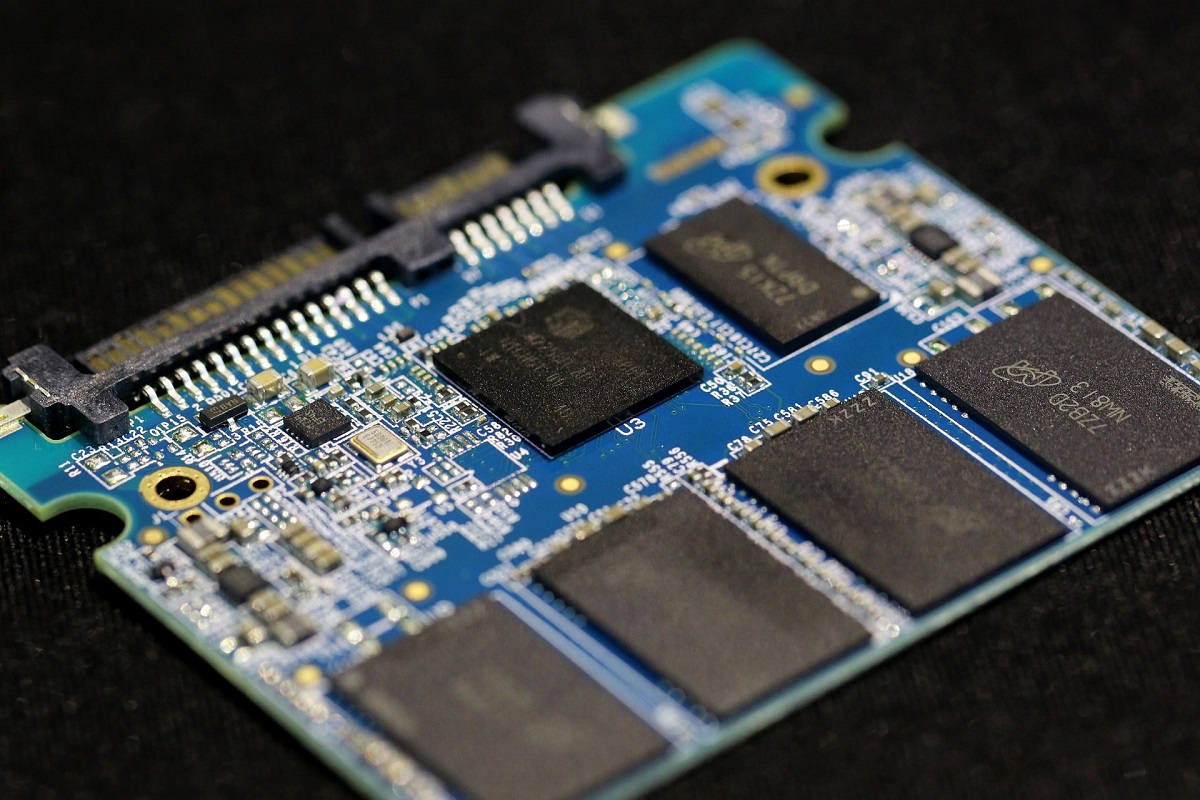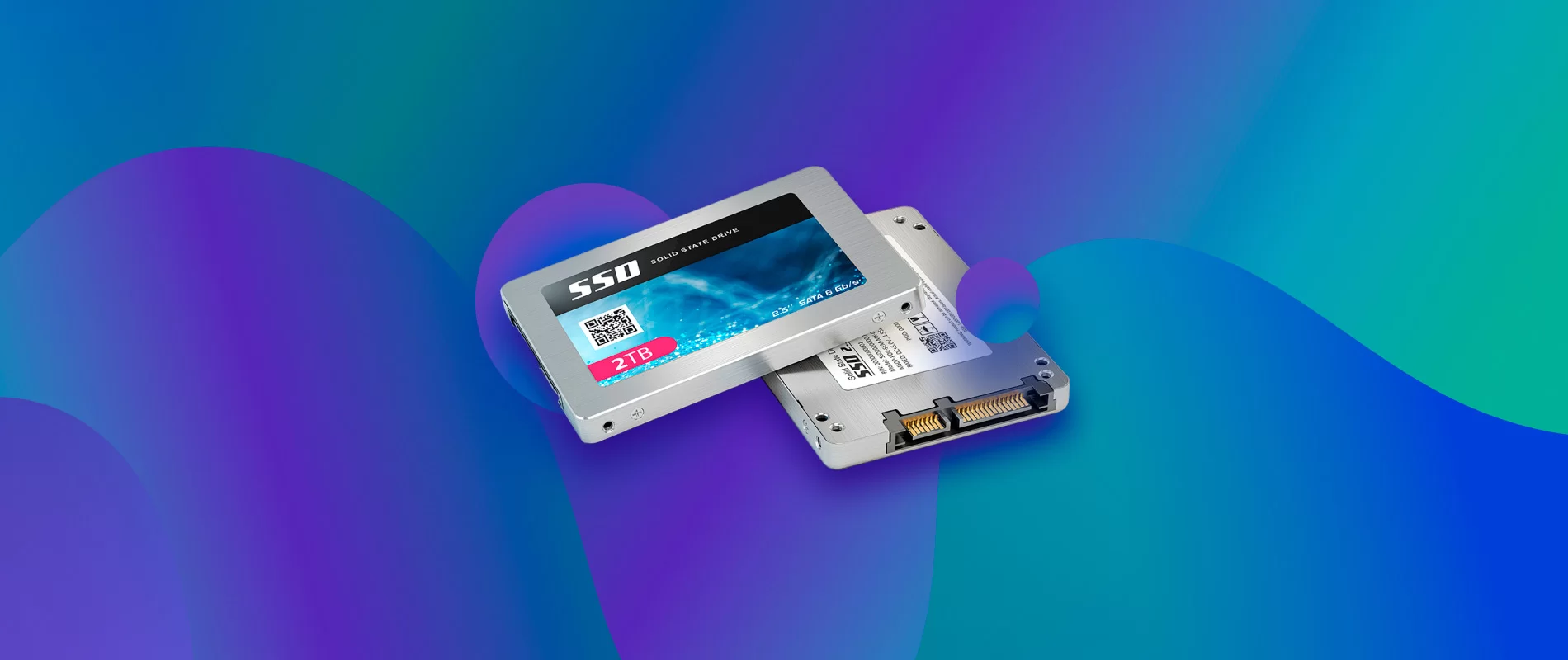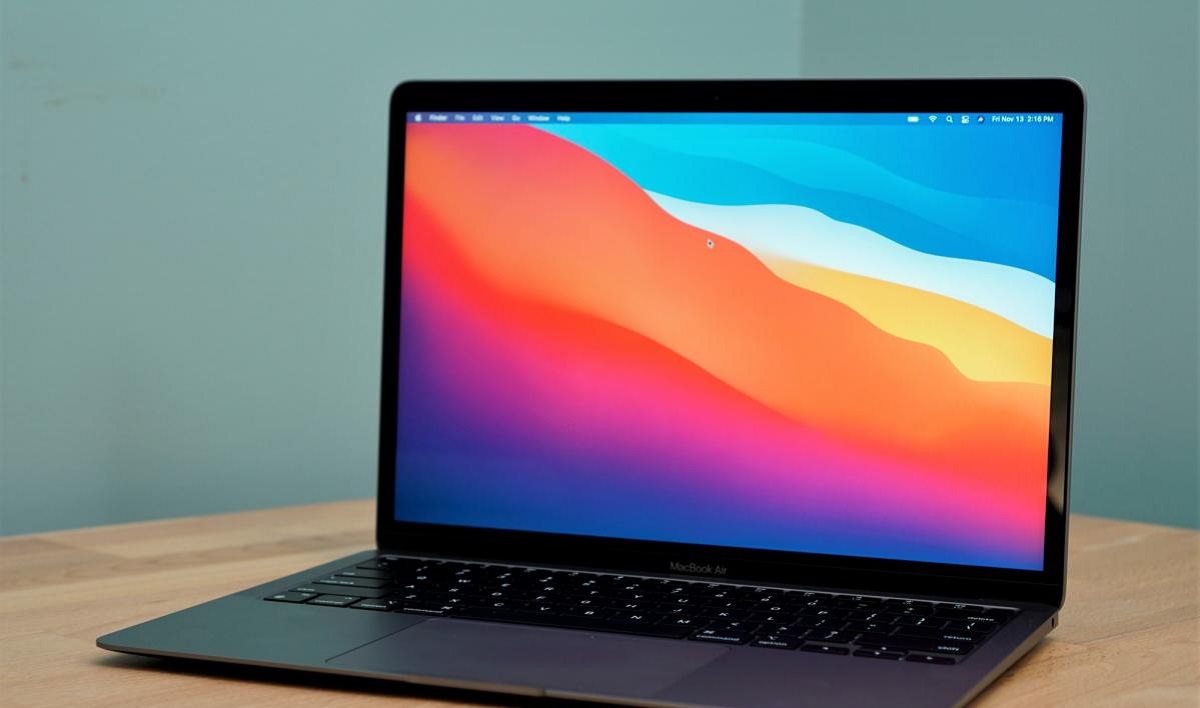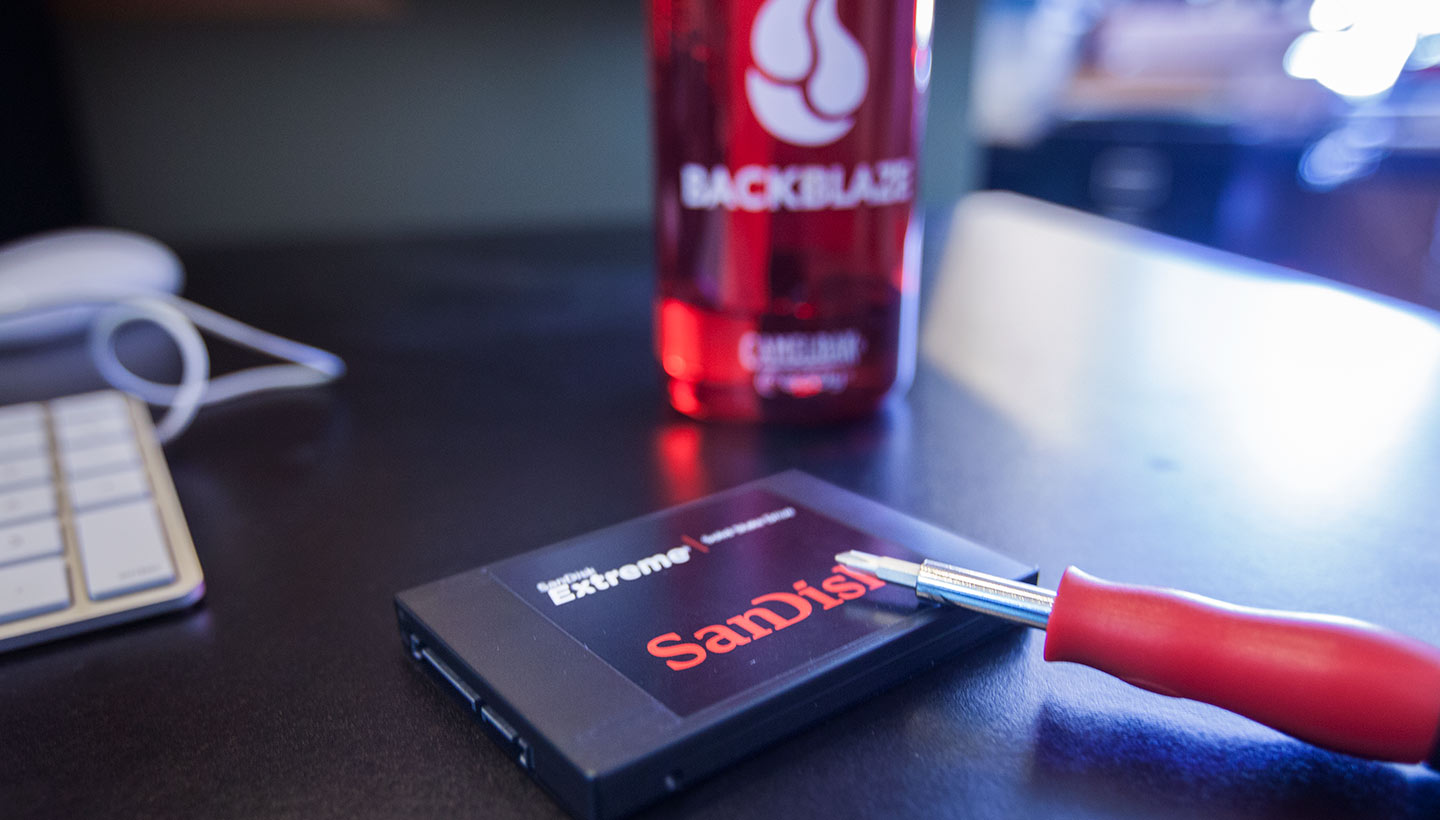Signs of a Failing SSD
A solid-state drive (SSD) is a crucial component in modern computers, providing fast and reliable storage for your data. However, like any electronic device, SSDs can eventually fail, leading to potential data loss and system instability. It’s important to be aware of the signs of a failing SSD so that you can take appropriate action before it’s too late. In this article, we’ll explore the key indicators that suggest your SSD may be on the brink of failure.
1. Slow Performance: One of the early signs of an SSD failure is a noticeable decrease in performance. If you find that your computer is taking longer to boot up or open applications, it could indicate that the SSD is struggling to read or write data effectively.
2. Frequent Crashes or Blue Screen Errors: If your computer crashes frequently or displays the dreaded blue screen of death (BSOD), it’s worth considering whether a failing SSD could be the culprit. These issues can arise when the SSD is unable to properly handle data, leading to system instability.
3. File Corruption or Data Loss: Data corruption or loss is a critical sign of an SSD nearing its end. If you’re experiencing frequent errors when accessing files or finding that files have gone missing, it’s essential to back up your data immediately to prevent permanent loss.
4. Disappearing Files or Inaccessible Drive: In some cases, an SSD in the advanced stages of failure may cause files to disappear completely or render your entire drive inaccessible. If you can no longer access the contents of your SSD, it’s important to seek professional assistance for data recovery.
5. Wear Leveling Count Reached Maximum: SSDs employ a wear-leveling algorithm to distribute data evenly across memory cells, extending the drive’s lifespan. However, when the wear leveling count reaches its maximum, it signals that the SSD is approaching its end of life.
6. Increasing Bad Blocks or Bad Sectors: Bad blocks or bad sectors on an SSD can result from physical damage or wear and tear. As these numbers increase, it indicates that the SSD is deteriorating and may soon become unreliable or unusable.
7. Overheating Issues: Excessive heat can negatively impact the performance and lifespan of an SSD. If you notice that your SSD is running hotter than usual, it could be a warning sign that it’s failing or reaching its temperature limit.
8. Clicking or Grinding Noises: SSDs are silent by design. If you hear unusual clicking or grinding noises coming from your computer, particularly near the SSD, it could indicate mechanical failure or damage to the drive.
9. SMART Warnings or Health Degradation: SSDs have Self-Monitoring, Analysis, and Reporting Technology (SMART) capabilities. If you receive SMART warnings or notice a degradation in the overall health of your SSD, it’s a clear indication that it may be failing.
10. Sudden System Freezes or Boot Failures: When an SSD is failing, you may experience sudden system freezes or be unable to boot your computer entirely. These issues can occur due to the SSD’s inability to read critical system files and can disrupt your workflow.
It’s crucial to remain vigilant and proactive when it comes to identifying signs of a failing SSD. Regularly backing up your data, monitoring performance, and addressing any unusual behavior can help you prevent severe data loss and ensure the longevity of your storage solution.
Slow Performance
One of the first signs that your SSD may be failing is a noticeable decrease in performance. SSDs are known for their fast read and write speeds, so if you start experiencing sluggishness or delays in your computer’s operations, it could be a red flag.
When an SSD is in good health, it can read and write data at lightning-fast speeds, resulting in quick boot times, smooth application launches, and overall responsive performance. However, as an SSD starts to fail, it may struggle to read or write data effectively, leading to slower performance.
If you notice that your computer is taking a longer time to boot up or load applications, it could be an indication that the SSD is having trouble retrieving or storing the necessary data. You may also experience delays when transferring files or opening large documents. These slowdowns can be frustrating and can significantly impact your productivity.
It’s important not to ignore these signs and brush them off as mere performance hiccups. While there could be other factors contributing to slow performance, such as insufficient memory or a fragmented hard drive, a failing SSD should not be overlooked.
To assess the performance of your SSD, you can run benchmark tests or monitor its read and write speeds using software specifically designed for SSD health analysis. These tools provide insights into the overall condition of your drive and can help identify if the performance slowdowns are indicative of SSD failure.
If the sluggishness persists and you’ve ruled out other potential causes, it’s crucial to address the issue promptly. You can consider taking the following steps:
- Check and update your SSD firmware: Manufacturers occasionally release firmware updates that can improve performance and address potential issues. Make sure you have the latest firmware installed for your SSD.
- Check for malware or viruses: Malicious software can significantly impact your computer’s performance, including the operation of your SSD. Run a comprehensive scan with reliable antivirus software to detect and remove any threats.
- Ensure sufficient free space: SSDs can slow down if they are nearly full. Aim to keep at least 20% of your SSD’s capacity free to allow for optimal performance.
- Consider upgrading or replacing your SSD: If your SSD is quite old and the performance issues persist, it may be time to consider upgrading to a newer model or replacing the failing drive altogether. Consult with a knowledgeable professional or do thorough research before making any decisions.
Remember, slow performance is just one potential sign of a failing SSD. It’s essential to consider this symptom in conjunction with other possible indicators to accurately diagnose the health of your SSD and take appropriate actions.
Frequent Crashes or Blue Screen Errors
If you find yourself experiencing frequent crashes or encounters with the dreaded blue screen of death (BSOD), your failing SSD could be to blame. These crashes and error messages are clear indicators of underlying issues with your system, and the failing SSD could be a contributing factor.
When an SSD starts to fail, it can result in data corruption or incomplete read/write operations. This can disrupt the stability of your system software and lead to crashes or BSODs. The errors generated by the operating system are often designed to protect your data and prevent further damage, but they can also be frustrating and cause disruptions in your work or activities.
One common occurrence is the system freezing entirely, requiring a forced restart or power cycle. Another manifestation is the BSOD, which displays a blue screen with error codes, system status messages, and memory dump files. These crashes and errors can happen seemingly at random, but if you notice a pattern of frequent occurrences, it’s worth investigating your failing SSD’s role in these issues.
To troubleshoot if your SSD is causing the crashes or BSOD errors, you can perform the following steps:
- Update device drivers: Outdated or incompatible device drivers can sometimes cause crashes or errors. Make sure to update all your drivers, including those associated with your SSD and motherboard, to their latest versions.
- Scan for malware: Malware infections can disrupt the normal functioning of your system and cause crashes. Run a full system scan using reputable antivirus software to check for any infections.
- Check system logs: Examine the system event logs for any error messages or warnings related to the storage system or disk operations. This can provide valuable insights into potential issues with your SSD.
- Perform disk and file system checks: Running disk and file system checks can help detect and repair any errors or inconsistencies on your SSD. You can use built-in utilities like CHKDSK (for Windows) or Disk Utility (for macOS) to perform these checks.
- Consider professional help: If the crashes or BSOD errors persist even after you’ve tried the above steps, it’s advisable to seek professional assistance. An expert can diagnose the exact cause of the issues and determine whether your failing SSD needs repair or replacement.
Keep in mind that while frequent crashes and BSOD errors are often associated with failing hardware like SSDs, they can also be caused by other factors such as faulty RAM, overheating, or software conflicts. Therefore, it’s essential to thoroughly investigate and consider all possibilities before concluding that your SSD is the sole cause.
Addressing the frequent crashes and BSOD errors promptly is crucial to prevent any potential data loss or further damage to your system. But remember, it’s always recommended to back up your important data regularly, regardless of the health of your SSD, to safeguard against unexpected failures.
File Corruption or Data Loss
One of the most alarming signs of a failing SSD is file corruption or data loss. If you notice that files are becoming corrupted or disappearing altogether, it’s essential to address the issue immediately to prevent permanent data loss.
When an SSD is on the verge of failure, it may struggle to properly store or retrieve data. This can result in files becoming corrupted during the read or write process. Corruption can manifest in various ways, such as files displaying errors, becoming unreadable, or causing applications to crash when attempting to access them.
In severe cases, files may completely disappear from your SSD. You might find empty folders or encounter situations where you’re unable to locate important documents or media files that were previously stored on the drive. These instances of data loss can be devastating, especially if you haven’t backed up your files regularly.
If you suspect file corruption or loss due to a failing SSD, here are some steps you can take:
- Check for backups: If you have a recent backup of your files, you can restore them to a safe location and verify if the issue persists. Maintaining regular backups is crucial to protect your data from unforeseen failures.
- Attempt file recovery: There are various data recovery software programs available that can help you retrieve files from a failing SSD. However, keep in mind that the success rate can vary, and it’s always better to seek professional assistance if the files are critical or valuable.
- Do not write to the SSD: If you suspect data loss, refrain from writing any new data to the failing SSD. Writing new files or performing disk operations can potentially overwrite the lost data, making recovery more challenging.
- Consult a professional: If your attempts to recover the files are unsuccessful, or the data is of utmost importance, it’s advisable to consult a professional data recovery service. These experts have specialized tools and techniques to salvage data from failing SSDs.
Prevention is key when it comes to protecting your data from file corruption and loss. Regularly backing up your files to an external storage device or a cloud storage service can ensure that even if a failure occurs, your data remains safe.
Remember that file corruption or loss can also occur due to other factors, such as software issues or human error. Therefore, it’s important to investigate all potential causes and rule out other possibilities before solely attributing it to a failing SSD.
If you encounter file corruption or data loss symptoms, don’t panic. Stay calm and follow the necessary steps to recover and safeguard your data. With careful action and professional assistance, there’s hope for retrieving lost files and minimizing the impact of a failing SSD.
Disappearing Files or Inaccessible Drive
If you find that files on your SSD are disappearing or your entire drive becomes inaccessible, it’s a strong indication of a failing SSD. These issues can be concerning, as they can lead to the loss of important data and disrupt your workflow.
When an SSD is failing, it may experience issues with storing and retrieving data. This can result in files mysteriously disappearing from your storage drive. You may notice entire folders becoming empty or finding that specific files you know were present are now missing.
In addition to disappearing files, you may also encounter situations where your SSD becomes completely inaccessible. When you try to access the drive, you may receive error messages such as “Drive not detected” or “Drive needs to be formatted.” These messages indicate that the file system or the SSD itself is experiencing severe problems.
In some cases, you may hear clicking or grinding noises coming from the SSD when it is powered on. These mechanical sounds can suggest physical damage or mechanical failure within the drive, exacerbating the issue of disappearing files or an inaccessible drive.
If you encounter disappearing files or an inaccessible drive, here are some steps you can take:
- Check drive connections: Ensure that the cables connecting your SSD to your computer are securely plugged in. Loose connections can sometimes lead to intermittent issues with the drive being detected or files disappearing.
- Try on a different computer: Connect the SSD to another computer or use an external enclosure to see if the drive behaves similarly. This can help determine if the issue is specific to your computer or if it’s indeed a problem with the SSD.
- Seek professional help: If the drive remains inaccessible or the files are still missing, it’s advisable to consult a professional data recovery service. They have the expertise and specialized tools to diagnose the issue and potentially recover your data.
- Backup any remaining data: If you have any remaining data that is still accessible, make sure to back it up to a separate storage device or cloud storage. This will ensure that you don’t lose any more files if the situation worsens.
Disappearing files or an inaccessible drive are serious symptoms of a failing SSD, and they should be addressed promptly. It’s crucial not to attempt any DIY repair methods or continue using the SSD if you’re not experienced in handling such issues, as it can potentially worsen the problem or cause further data loss.
Remember, even if your SSD becomes inaccessible or files disappear, there is still the possibility of recovering your data with the help of professionals. However, prevention is always better than cure, so make sure to regularly back up your important files to avoid any potential loss due to hardware failures.
Wear Leveling Count Reached Maximum
Wear leveling is a critical feature in SSDs that helps distribute data evenly across memory cells, preventing excessive wear on specific areas of the drive. However, SSDs have a limited number of write cycles they can endure before they start to degrade. When an SSD reaches its maximum wear leveling count, it indicates that the drive is approaching the end of its lifespan.
The wear leveling count is a parameter stored in the SSD’s SMART (Self-Monitoring, Analysis, and Reporting Technology) data. It provides an estimate of how close the SSD is to reaching its maximum write cycle capacity. Monitoring this count can give you valuable insights into the health and remaining lifespan of your SSD.
When the wear leveling count reaches its maximum, it implies that the SSD’s memory cells have endured numerous write cycles and may be experiencing wear and tear. As a result, the drive’s overall performance and reliability can deteriorate significantly.
It’s important to note that the maximum wear leveling count varies between different SSD models and manufacturers. Some SSDs may have higher write endurance than others, depending on the quality of the NAND flash memory used. Checking the specifications or the manufacturer’s documentation of your SSD can provide you with more information on its expected lifespan.
If you discover that your SSD’s wear leveling count has reached its maximum, there are a few steps you can take:
- Assess the drive’s current performance: Pay attention to any signs of degraded performance, such as slow read/write speeds or increased response times. These symptoms can indicate that the SSD is suffering from wear-related issues.
- Backup your data: Start backing up your important files regularly to ensure you don’t lose any data due to a potential failure of the SSD.
- Monitor the SMART attributes: Keep an eye on other SMART attributes provided by the drive to detect any other warning signs of potential failure, such as high temperatures or increasing bad sector counts.
- Consider replacing the SSD: If your SSD has reached its maximum wear leveling count and is exhibiting degraded performance or other indications of potential failure, it may be time to consider replacing the drive. Consult with reputable hardware vendors or seek professional advice to choose a reliable and suitable replacement.
Remember that reaching the maximum wear leveling count doesn’t necessarily mean that your SSD will fail immediately. Some drives may continue functioning for an extended period even after reaching this limit. However, it’s crucial to be proactive in monitoring the drive’s health and taking appropriate measures to minimize the risk of data loss.
Regularly checking the wear leveling count and being aware of the SSD’s remaining lifespan can help you plan for a timely replacement and ensure the ongoing stability and reliability of your data storage solution.
Increasing Bad Blocks or Bad Sectors
Bad blocks or bad sectors on an SSD can occur as a result of physical damage, manufacturing defects, or wear and tear over time. These damaged areas of the drive can lead to data loss, system instability, and other performance issues. If you notice the number of bad blocks or bad sectors on your SSD increasing, it is a clear indication that the drive is deteriorating and may soon become unreliable or unusable.
Bad blocks or bad sectors are areas on the SSD where the data cannot be properly read or written. The operating system may try to mark these blocks as “bad” and avoid using them in the future, but if the number of bad blocks or bad sectors starts to rise, it suggests that the drive’s overall health is declining.
You can check the status of bad blocks or bad sectors on your SSD using diagnostic tools or software. These tools perform a surface scan and identify any problematic areas on the drive. If the scan reveals an increasing number of bad blocks or bad sectors, it is crucial to take immediate action to ensure data integrity and prevent further damage.
Here are some steps you can take if you notice increasing bad blocks or bad sectors:
- Back up your data: Before attempting any repairs or further diagnostics, make sure to back up all important data from the failing SSD. This ensures that you have a copy of your files in case the situation worsens or the drive becomes completely unusable.
- Perform a disk check: Use built-in disk checking tools like the CHKDSK command on Windows or the Disk Utility on macOS to scan and repair any file system or disk errors. These utilities can help identify and potentially fix issues related to bad blocks or bad sectors.
- Consider using repair software: There are specialized repair software programs available that focus on repairing bad blocks or bad sectors on SSDs. These tools attempt to recover data from the affected areas and mark them as unusable to prevent further issues.
- Consult a professional: If the number of bad blocks or bad sectors continues to increase despite your best efforts, it’s advisable to seek professional assistance. A data recovery specialist or SSD repair service can assess the situation and provide expert guidance on the best course of action.
- Prepare for SSD replacement: If the bad blocks or bad sectors on your SSD are rapidly increasing and causing significant data loss or system instability, it may be time to consider replacing the failing drive. Research and select a new SSD that meets your needs and ensure a smooth transition by transferring your data appropriately.
Remember, an increasing number of bad blocks or bad sectors is a clear indication that your SSD’s health is deteriorating. It’s crucial to address the issue promptly to prevent permanent data loss and protect the stability of your system.
Regular maintenance, monitoring, and proactive data backup are key strategies in mitigating the risks associated with failing SSDs and ensuring the long-term reliability of your data storage solution.
Overheating Issues
Overheating can have severe consequences for the performance and lifespan of an SSD. While SSDs generate less heat compared to traditional hard disk drives (HDDs), excessive heat can still impact their functionality and reliability. If you notice that your SSD is running hotter than usual, it could be a warning sign that it’s failing or reaching its temperature limit.
Heat can degrade the performance of electronic components, including NAND flash memory used in SSDs. High temperatures can lead to data corruption, increased error rates, and even complete drive failure. Additionally, prolonged exposure to excessive heat can shorten the overall lifespan of an SSD.
There are several reasons why an SSD may experience overheating issues:
- Poor ventilation: Inadequate airflow inside your computer case can contribute to heat buildup. Ensure that your computer case is properly ventilated with fans and that there are no obstructions to the airflow around the SSD.
- High ambient temperature: If the environment in which your computer operates is consistently hot, it can raise the temperature of the SSD as well. Consider improving the cooling of your computer system or moving it to a cooler location.
- Excessive usage: Intensive read/write operations or continuous heavy workloads on an SSD can generate more heat. This is more likely to occur in high-performance computers, gaming rigs, or servers with demanding tasks.
- Physical proximity to heat sources: The placement of the SSD within your computer can also impact its temperature. If it is located near other heat-producing components, such as a graphics card or CPU, it may be subjected to higher temperatures.
If your SSD is exhibiting overheating issues, here are some steps you can take to mitigate the problem:
- Improve ventilation: Ensure that your computer case is well-ventilated and that the airflow around the SSD is unobstructed. Consider adding additional fans or optimizing the positioning of existing fans to promote better airflow.
- Clean the SSD and its surroundings: Dust accumulation on and around the SSD can hinder heat dissipation. Regularly clean your computer case and the SSD itself using compressed air or other appropriate methods to remove any dust or debris.
- Check system fan settings: Make sure that the fans in your computer system are functioning correctly. Check the fan settings in your computer’s BIOS or use third-party software to ensure that they are running at their optimal speeds.
- Reduce usage or workload: If your SSD is consistently running hot due to intensive usage or workload, consider reducing the workload or using the SSD for specific tasks only. This can help minimize heat generation and extend the lifespan of the drive.
- Consider a heat sink or cooling solution: Depending on the design of your SSD and your specific needs, you may be able to install a heat sink or consider aftermarket cooling solutions to keep the drive’s temperature within safe limits.
It’s important to monitor the temperature of your SSD regularly, either through the manufacturer’s provided software or using third-party tools. Operating within the recommended temperature range specified by the manufacturer can help ensure the optimal performance and longevity of your SSD.
If the overheating issues persist despite your efforts to mitigate them, it’s advisable to seek professional assistance. A specialist can evaluate the situation, identify any underlying issues, and recommend appropriate solutions to resolve the overheating problem.
By addressing overheating issues and ensuring proper cooling, you can help safeguard your SSD from potential damage and maintain its optimal performance for an extended period.
Clicking or Grinding Noises
One telltale sign of a failing SSD is the presence of clicking or grinding noises. SSDs are typically silent in their operations, so if you hear unusual sounds coming from your computer, especially near the SSD, it could indicate mechanical failure or damage to the drive.
Clicking or grinding noises suggest that there may be physical issues within the SSD, such as a malfunctioning motor or a faulty component. These sounds can be alarming and should not be ignored, as they often indicate that the drive is in a critical state and may fail soon.
There can be several reasons why you might hear clicking or grinding noises from your SSD:
- Mechanical failure: The presence of clicking or grinding noises can be a sign of mechanical failure within the SSD, such as failed moving parts. This can occur due to wear and tear over time or from physical damage.
- Loose connections: Loose connections between the SSD and the motherboard or power supply can cause intermittent power interruptions. These interruptions can result in the drive making unusual noises.
- Damaged components: Damage to the internal components of the SSD, such as the circuit board or connectors, can cause them to malfunction and produce clicking or grinding sounds.
If you hear clicking or grinding noises from your SSD, here’s what you can do:
- Check connections: Ensure that the connections between the SSD, motherboard, and power supply are secure. If any cables or connectors are loose or damaged, try reseating them or replacing them with new ones.
- Isolate the source: Determine if the noise is indeed coming from the SSD. Sometimes, other components like fans or hard drives can produce similar sounds. Carefully listen and pinpoint the source of the clicking or grinding noise before taking any further action.
- Backup your data: If you suspect that the SSD’s mechanical failure is imminent, prioritize backing up your important data to prevent potential data loss.
- Consult a professional: Clicking or grinding noises from an SSD typically indicate a severe problem. It’s recommended to consult with a professional data recovery specialist or SSD repair service to assess the situation and determine the best course of action.
- Prepare for replacement: If the SSD is in critical condition and cannot be repaired, start planning for a replacement drive. Research and select a suitable replacement SSD to ensure a smooth transition and avoid any disruptions to your workflow.
Clicking or grinding noises are alarming signs of potential SSD failure. It’s crucial to address them promptly to prevent permanent data loss and to safeguard the stability and reliability of your storage solution.
Remember, attempting to repair an SSD on your own without proper knowledge and expertise can worsen the issue or cause further damage. It’s always best to seek professional help and rely on their expertise in handling failing SSDs.
SMART Warnings or Health Degradation
SMART (Self-Monitoring, Analysis, and Reporting Technology) is a feature found in SSDs that continuously monitors the health and performance of the drive. SMART provides valuable information on various parameters, including temperature, read/write errors, reallocated sectors, and overall health status. If your SSD is displaying SMART warnings or indicating health degradation, it’s crucial to take immediate action.
SMART warnings or health degradation messages are clear indicators that the SSD is experiencing issues and may be approaching the end of its lifespan. These warnings are designed to alert you to potential problems and allow you to address them before a complete failure occurs.
The specific SMART attributes and warnings can vary depending on the SSD model and manufacturer. Some common indicators of SMART warnings or health degradation include:
- Increasing reallocated sector count: Reallocated sectors are areas of the SSD’s memory that have been marked as defective and replaced with spare sectors. A rising count of reallocated sectors can suggest that the drive is developing more bad or unreadable areas.
- Elevated read or write error rates: Frequent read or write errors can indicate problems with the SSD’s ability to reliably read or write data. This can lead to data corruption, file system errors, and potential data loss.
- High temperature: If the SSD consistently runs at high temperatures and exceeds the recommended operating range, it can lead to accelerated degradation and potential failures. SMART can monitor the drive’s temperature and alert you to any temperature-related issues.
- Other critical SMART attributes: SSDs have various other SMART attributes that can provide insights into the drive’s health, such as wear leveling count, power-on hours, erase count, or unexpected power loss events. Any warning or significant changes in these attributes should be taken seriously.
If you receive SMART warnings or notice health degradation indications, here’s what you should do:
- Backup your data immediately: The first and most crucial step is to prioritize data backup. By backing up your important files, you ensure that you have a copy of your data in case of SSD failure or data loss.
- Check the manufacturer documentation: Consult the manufacturer’s documentation or website for information on the specific SMART attributes relevant to your SSD model. This can help you understand the significance of the warnings or changes in attributes.
- Replace the failing SSD: Considering the severity of SMART warnings or health degradation, it is recommended to replace the failing SSD. Plan for a suitable replacement based on your storage needs and transfer your data appropriately.
- Consult a professional: If you are unsure about the SMART warnings or need assistance in interpreting the data, it’s wise to seek professional help. Data recovery specialists or SSD repair services can provide expert guidance and help you navigate the situation.
SMART warnings or health degradation serve as crucial indicators that your SSD requires immediate attention. Ignoring these warnings can result in severe data loss, system instability, or a sudden drive failure.
Regularly monitoring and addressing SMART warnings can help you take proactive measures to protect your data and ensure the ongoing reliability of your storage solution.
Sudden System Freezes or Boot Failures
If you experience sudden system freezes or encounter boot failures, your failing SSD may be the root cause. These issues can be disruptive and frustrating, as they prevent you from accessing your computer or using it effectively. It’s essential to address these problems promptly to prevent further data loss and restore the stability of your system.
Sudden system freezes occur when your computer becomes unresponsive, requiring a forced restart to regain functionality. These freezes can happen during regular usage or when performing specific tasks, indicating potential issues with the SSD’s ability to read or write data reliably.
Boot failures, on the other hand, occur when your computer fails to start up properly, often resulting in error messages or an inability to reach the operating system. A failing SSD can prevent the system from accessing critical boot files, leading to repeated failed boot attempts or an inability to boot altogether.
These symptoms can have multiple causes, but a failing SSD is a common culprit. The intermittent or complete inability to read data from the drive can disrupt the normal functioning of your computer system.
If you encounter sudden system freezes or boot failures, here are some steps you can take:
- Ensure secure connections: Check and ensure that the SSD is properly connected to the motherboard and power supply. Loose connections can lead to intermittent data transfer issues and cause freezes or boot failures.
- Update firmware and drivers: Update your SSD’s firmware to the latest version provided by the manufacturer. Additionally, update other relevant drivers, such as those associated with the storage controller or motherboard, to minimize compatibility issues.
- Run disk checks: Perform diagnostic checks on your SSD using tools like CHKDSK (for Windows) or Disk Utility (for macOS) to identify and repair file system or disk errors that may be causing the freezes or boot failures.
- Check for malware or viruses: Malware infections can cause system instability and prevent proper booting. Run a comprehensive scan with reputable antivirus software to detect and remove any potential threats.
- Consult professional assistance: If the freezes or boot failures persist despite your best efforts, it’s advisable to consult a professional data recovery specialist or SSD repair service. They can diagnose the problem accurately and provide guidance on appropriate solutions.
- Consider SSD replacement: If your SSD is significantly degraded and continues to cause system freezes or boot failures, it may be a sign that the drive is nearing its end of life. Plan for a replacement SSD and ensure a smooth transition by transferring your data appropriately.
Addressing sudden system freezes or boot failures caused by a failing SSD is crucial for the stability and performance of your computer. These symptoms should not be ignored, as they can lead to permanent data loss and a complete system breakdown.
Regularly backing up your data is always recommended to minimize the impact of hardware failures and ensure that you have copies of your important files in case of emergency.
By taking proactive steps and seeking professional assistance if necessary, you can resolve the issues causing sudden system freezes or boot failures and restore the functionality and reliability of your computer system.







